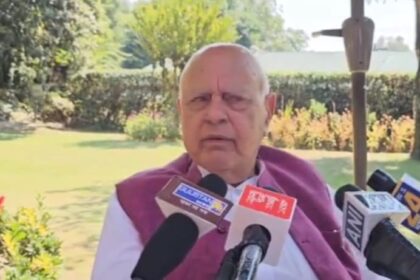The race for the Ladakh parliamentary constituency has narrowed down to five candidates after the nomination papers of two covering candidates and an Independent were rejected during the scrutiny process on Saturday, as per the Returning Officer, Santosh Sukhadeve.
The rejections leave only five candidates in the fray for the Ladakh Lok Sabha seat, which is the largest parliamentary constituency in the country, spanning a massive 173,266 sq km and boasting over 1.82 lakh voters.
The candidates whose nominations were cancelled include the Bharatiya Janata Party’s (BJP) covering candidate Stanzin Lakpa, the Congress party’s covering candidate Smanla Dorje Nurboo, and Independent candidate Ghulam Nabi Zia, whose nomination form was found incomplete.
After the scrutiny process, the five candidates whose nominations were deemed valid are BJP’s Tashi Gyalson and Congress’s Tsering Namgyal, both from Leh, along with three Independent candidates – Mohmad Haneefa Jan, Sajjad Hussain, and Kacho Mohd Feroz, all hailing from Kargil. The last date for withdrawal of candidature is May 6th, while the Ladakh parliamentary constituency is set to go to polls in the fifth phase of the elections on May 20th.
The Ladakh Lok Sabha seat has been a closely contested battleground over the years, with the BJP’s Thupstan Chhewang winning it for the first time in 2014. However, Chhewang resigned from the party in 2018 and is currently heading the Leh Apex Body, which, along with the Kargil Democratic Alliance, is spearheading a movement for the restoration of statehood and extension of the sixth schedule of the Constitution to the Union Territory. In the 2019 general elections, the BJP managed to retain the seat through Jamyang Tsering Namgyal, who initially revolted against the party after being denied a ticket this time. However, Namgyal has since joined the campaign trail for the party’s nominee, Tashi Gyalson, ending the uncertainty within the BJP camp. Historically, the Congress party has won the Ladakh seat six times – the highest among all parties, followed by the National Conference with two wins, and Independents claiming victory on three occasions since the constituency’s inception in 1967. As the campaigning intensifies, all eyes will be on the remaining candidates and their strategies to woo the voters in this politically significant and geographically vast parliamentary constituency.





